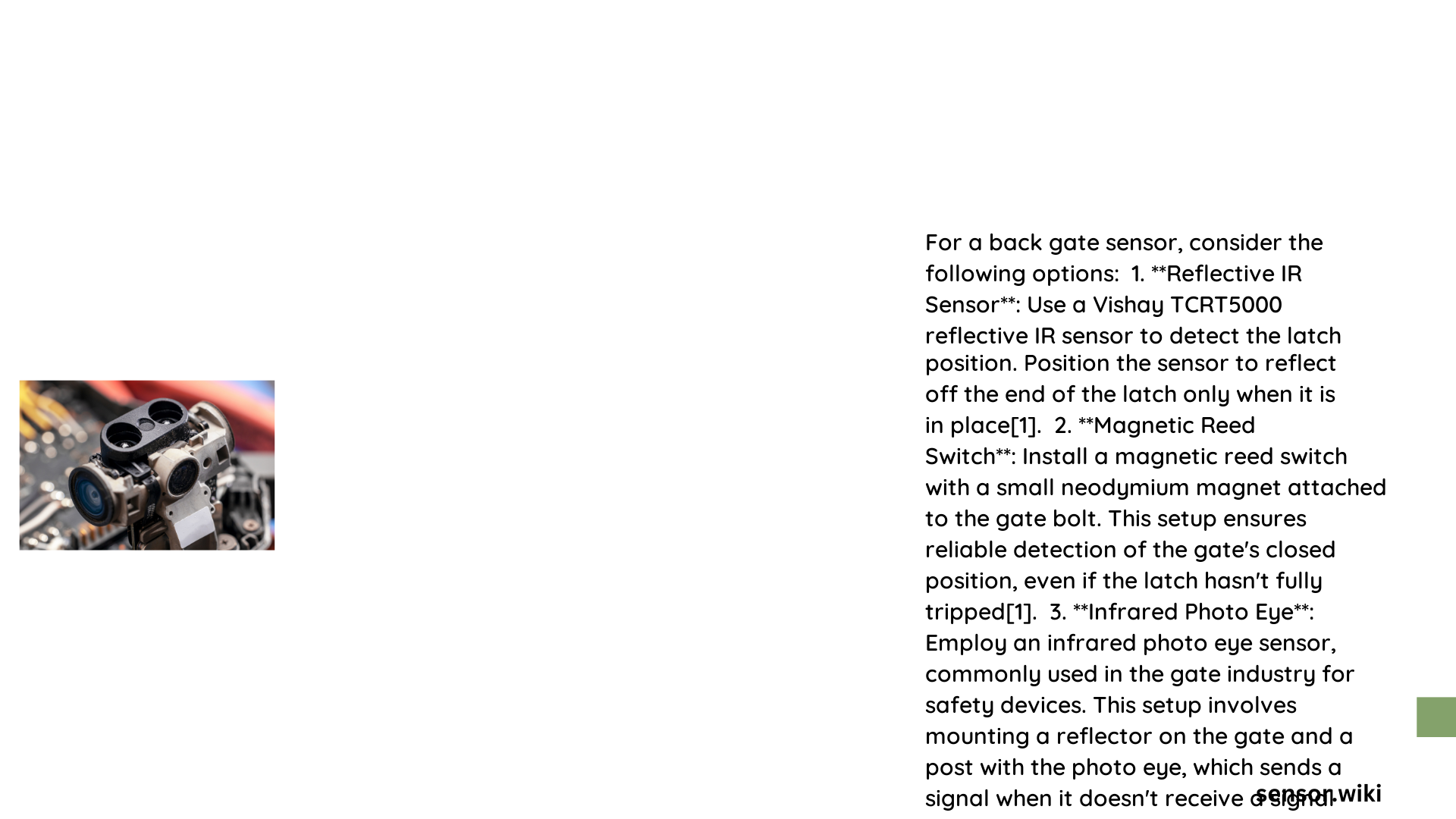Back gate sensors represent sophisticated technological solutions designed to enhance property security by providing real-time monitoring and intrusion detection. These advanced electronic devices utilize various detection mechanisms like magnetic switches, laser technologies, and wireless communication protocols to track gate movements, detect unauthorized entries, and integrate seamlessly with comprehensive security systems. Modern back gate sensors offer robust features including long-range wireless transmission, weatherproof construction, and versatile compatibility across different gate configurations.
What Are Back Gate Sensors?
Back gate sensors are specialized electronic devices engineered to monitor and detect movement, entry, or potential security breaches at property perimeter access points. These sensors employ multiple detection technologies to provide comprehensive surveillance and alert property owners about unauthorized access.
Key Components of Back Gate Sensors
| Sensor Type | Detection Method | Power Source | Range |
|---|---|---|---|
| Magnetic Reed Switch | Contact-based | Battery/Wired | 100-200 feet |
| Laser Time-of-Flight | Optical Detection | Electric/Solar | 15-30 feet |
| Wireless Sensor | Radio Frequency | Battery | 150-300 feet |
How Do Back Gate Sensors Work?

Back gate sensors operate through sophisticated detection mechanisms:
- Magnetic Proximity Detection
- Uses reed switch technology
- Triggers when magnetic alignment changes
-
Indicates gate opening or unauthorized movement
-
Laser-Based Detection
- Generates precise detection zones
- Measures object distance and movement
-
Provides three-dimensional monitoring capabilities
-
Wireless Communication
- Transmits real-time alerts
- Integrates with central security systems
- Enables remote monitoring
What Are the Technical Specifications?
Honeywell 5816OD Wireless Outdoor Sensor Specifications
- Wireless Range: 200 feet nominal
- Battery: 2 AA Lithium batteries
- Weather Protection: NEMA 4X rated
- Temperature Tolerance: -40°F to 150°F
- UL Listings: UL634, UL1023
Vegetronix VG-SWITCH Universal Sensor Features
- Operational Temperature: -40°C to 85°C
- Configuration: Normally open/closed switch
- Cable Length: 24 inches
- Power Requirements: No external power needed
What Installation Considerations Exist?
Installation Best Practices
- Choose weatherproof mounting locations
- Ensure proper magnetic alignment
- Seal sensor connections against moisture
- Test wireless signal strength before permanent installation
- Configure sensor sensitivity based on environment
What Are Potential Challenges?
Common Back Gate Sensor Limitations
- Signal interference in metal-rich environments
- Battery replacement requirements
- Potential false alarm triggers
- Limited detection range in complex landscapes
What Technologies Enhance Back Gate Sensors?
- Machine learning algorithms
- Advanced signal processing
- Multi-sensor fusion techniques
- Cloud-based monitoring platforms
Recommended Selection Criteria
- Compatibility with existing security infrastructure
- Environmental durability
- Detection accuracy
- Wireless range
- Battery life
- Cost-effectiveness
Conclusion
Back gate sensors represent critical components in modern security ecosystems, offering intelligent, adaptable solutions for perimeter monitoring. By understanding their technological nuances, property owners can make informed decisions about implementing robust security strategies.
